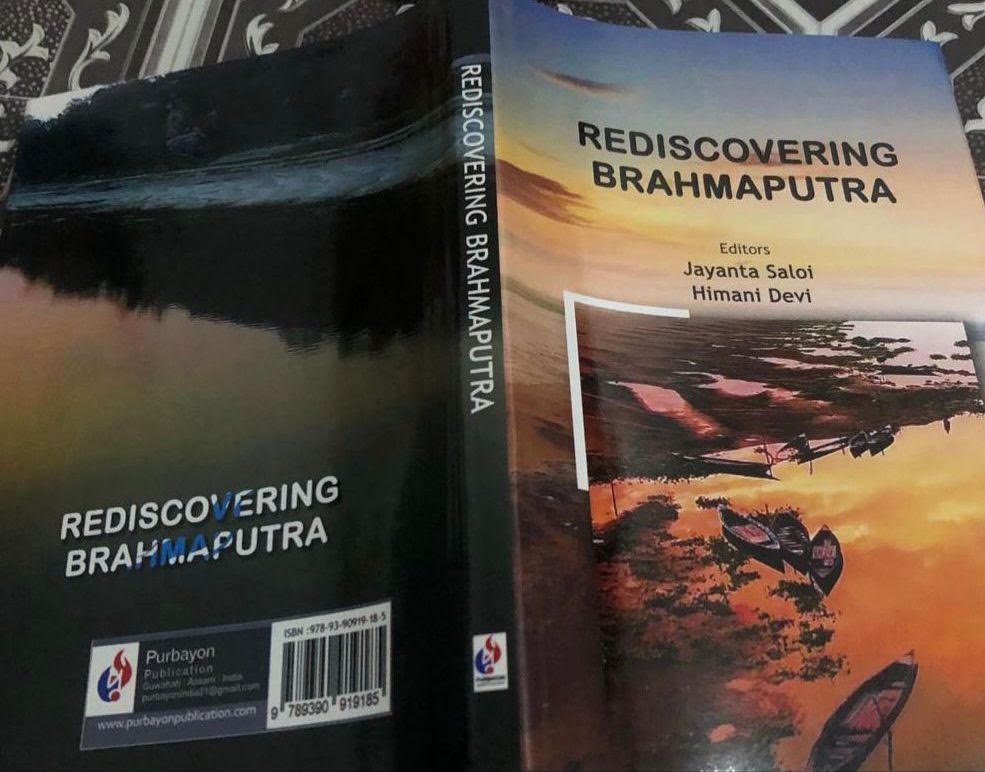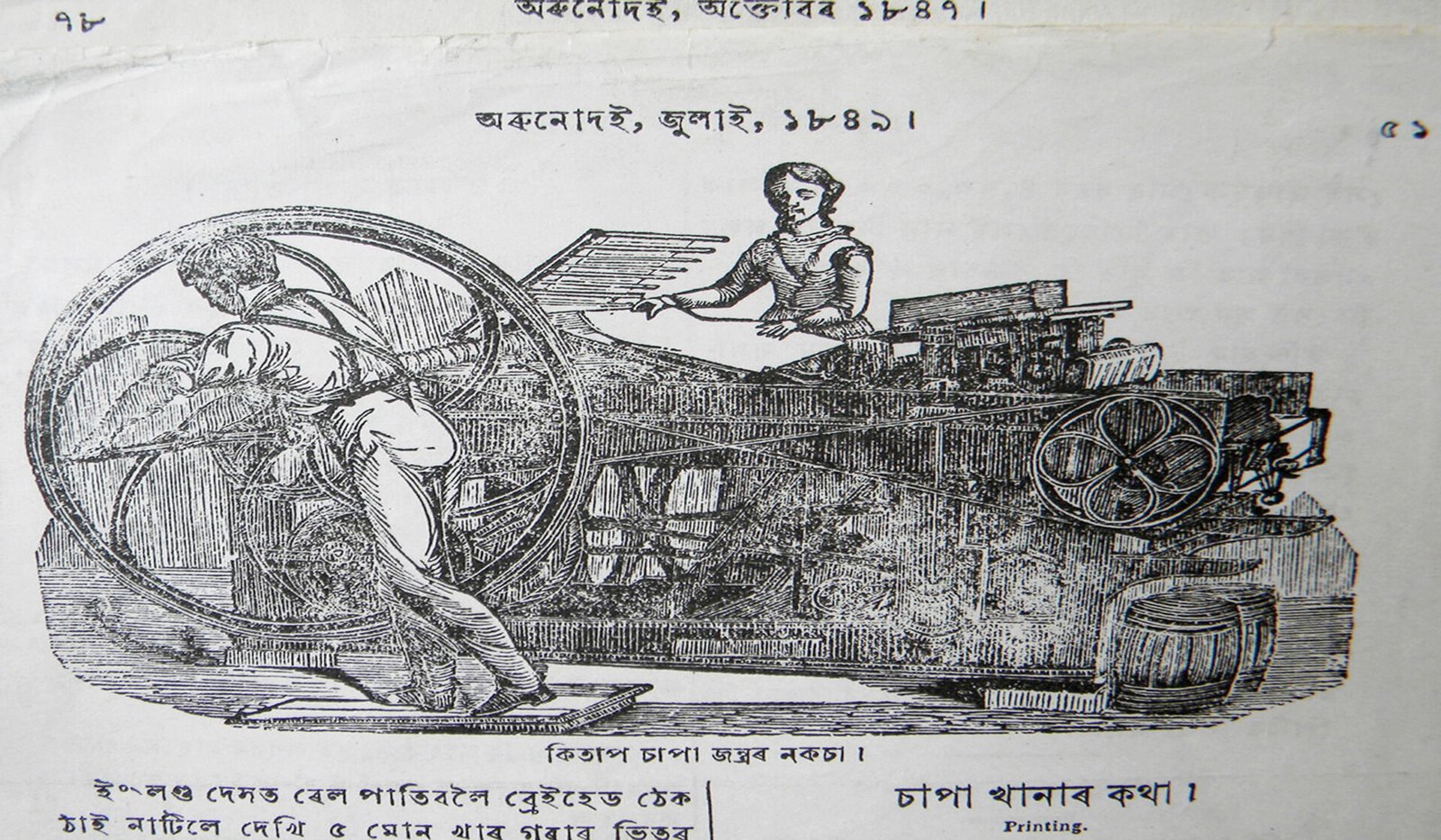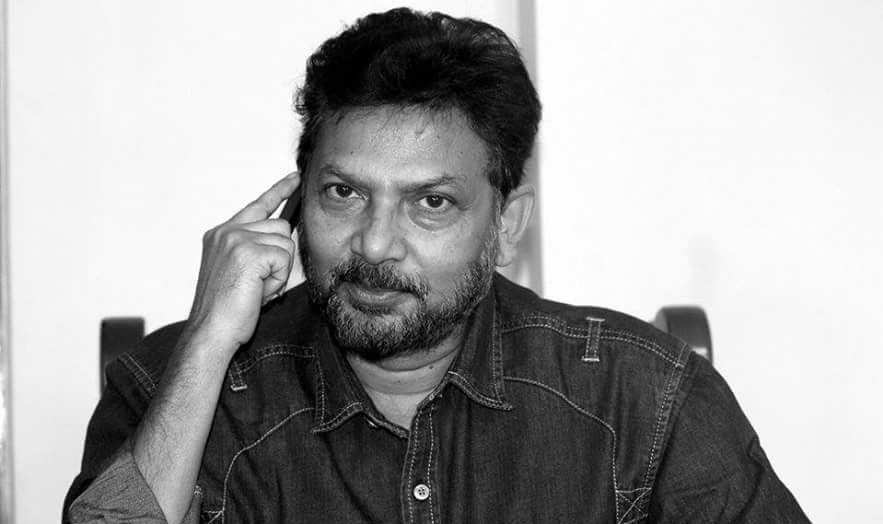By: Dr. Ratan Bhattacharjee
“O, mighty Brahmaputra / In your bosom lies our saga / To your purity we make a bow”, wrote one young Assamese poet. The river plays a pervading role in our life, but the Brahmaputra is for Assam what Ganga is for North India and the Padma is for Bangladesh. The recently published book – “Rediscovering Brahmaputra edited by Jayanta Saloi and Himani Devi of Lakhipur College will meet a long demand for a good informative well-researched book exclusively on the Brahmaputra. Brian Andreas in ‘Story of People beautifully wrote “I like geography best because your mountains and rivers know the secret. Pay no attention to boundaries.” Those who know the river culture of Brahmaputra will at once agree with Brian Andreas. The Brahmaputra which silently flows over the ages contains all the basic secrets of Assamese life. It is the life force of Assam. No one will deny its all-pervading influence on Assamese life; maybe it is social, economic, political, or cultural. Life cannot be imagined without the presence of the Brahmaputra and its tributaries.
This edited volume is enriched by the researched articles of a good many academicians and the book is peer-reviewed by Dr. Syed Abdul Azimi (Retd. HOD, History) of Habraghat Mahavidyalaya, Dr. Lalit Rabha, Principal Dudhnoi College, and Dr. Binita Bora Debchoudhury of Bhattadev University. The range of research articles encompasses a wide range. Dr. Gitali Saikia in her article analyzed how the great poet singer Bhupen Hazarika dreamt that the land which is swept by the river Brahmaputra will be illuminated by the light of knowledge and wisdom. Humanity and universal brotherhood, unity, and equality will be its strength, “Bheta bhangi Pragjyotishat boijeuti nijarar dhar / Sata sata bantire gyanare dipalire jilikibo Luitare par”; (Rifting the barrier of darkness / A shroud of light appears in Pragjyotishpur / Hundreds of lamps with the light of wisdom lit). The banks of Luit will be illuminated as discussed the role of the songs of Dr. Bhupen Hazarika in assembling the different communities of language and culture. Bhupen Hazarika’s songs embody the history of this civilization. Hazarika is adept at telling histories of the land, nature, landscape, and contested political ambiance through his lyrics. All these come again and again in the articles on Bhupen Hazarika’s depiction of Brahmaputra sensibility. The people of Assam draw inspiration from the Brahmaputra and in the process; the river contributes to the development of literature, music lores, folk songs, and other musical forms. Abu Sharma Ahmed in ‘Tourism in Assam’ made a data-based analysis of the composite colourful culture of Assam vis a vis Brahmaputra. On the banks of Brahmputra, Assam developed into a melting pot of diverse cultures of the Mogoloids, Aryasn, and Indo-Tibetans. It is also a land of the Aboriginal tribes like the Tiwas, the Bodos, the Karbis, the Mishings, the Rabhas and the Singpho, and so on. It also attracts tourists for its flora and fauna as well as the Tantricism and Muga fabric. Jyotika Deka shows how the Brahmaputra shapes the history, life, and culture of the Assamese people and the river here is a silent witness to all the historical and cultural events which have a far-reaching impact. Geology, Geography, History, Culture, and Society cannot be envisioned without the Brahmaputra. Tripti Sonowal explores the riparian sensibility in Assamese Folklife and literature. She cites a lot of poetic lines to show how Assamese culture and literature are deep-rooted in the riparian sensibility. Manash Jyoti Nath and Heerak Jyoti Nath also focused on the songs of Bhupen Hazarika to show how the identity of Assamese people is in many ways linked to the Brahmaputra, “I am the Lalung, Chutia, Lushai, Miir, Garo, Mishimi, Khamti, / I fight for equality and friendship.” Even in science research, the Brahmaputra is unavoidable as Ananya Phukan and Kalyani Mali have shown how many important Angiopermic flora of Brahmaputra valley enriched medical science. He traces back to the early nineteenth century when Francis Buchanan –Hamilton started the survey on forests of lower Assam for systematic floristic studies focused on the Flora of British India. The book has two sections English and Assamese and the Assamese section contains many valuable articles written by Mala Ghosh, Dr. Swajeda Khatun, and many others. Rajen Das focuses on the mention of the Brahmaputra in some songs of Bhupen Hazarika in his paper entitled ‘Bhupen Hazarika Geetot Brahmaputra,’ he analyses ten songs of Dr. Hazarika in which the composer glorified the mighty river as well as the banks of it. Gitanjali Nath in her paper ‘Asamor Jatiya Jibonot Mahabahu Brahmaputra’ discusses Brahmaputra as the lifeline of Assamese People.In the research paper entitled ‘Nilmoni Phukanor Kobita Brahmaputrat Surjastyo: Eti Alochana’. Priyanka Kashyap discusses ‘Nilmani Phookan’s use of the metaphor of Brahmaputra’.
Another article ‘Garo Janagoshthi’ by Dipty Das focuses on the Garo tribe of Brahmaputra Valley and their lifestyle. Mira Barmam in her article ‘Boichitromoy Nadi Mahabahu Brahmaputra Asomor Jibon Probaho’ has an overall discussion on the influence of Brahmaputra on the people of Assam. Mira Barman’s article needs special mention for its new perspective on the Brahmaputra. Unless we go through all the articles, the value of the bilingual book on the Brahmaputra cannot be fully assessed. Both the editors did their job wonderfully. Mythologically this male river is not merely a river for the people of Assam; its benevolent or malevolent impact is fully integrated into the life of the people living in the valley. Himani Devi, Associate Professor of English at Lakhipur College is a sincere academician and her keen interest in the Brahmaputra is revealed in the careful editing and proofreading of the whole book. She is also a good translator of Assamese into English and vice versa. This helped her in editing the book in such an excellent way along with Prof Jayanta Saloi. For good grades in NAAC accreditation, many academic institutions undertake many projects. But Lakhipur College comes out with a wonderful mission of rediscovering the Brahmaputra by focusing on the riparian culture of Assam and their editorial venture opens up a new vista of information about this great river of India Any venture from a college is impossible without the active interest of the Principal, IQAC Coordinator and the college management authority. The wonderful co-ordination of Lakhipur College can be a model for many other institutions of Higher Education in Assam, nay India for publishing this kind of book of well-researched articles, especially on a very different kind of topic that is so intrinsically related to Assamese life and culture. A few years ago, I was invited to Narengi Anchalik Mahavidyalaya to speak as a Resource Person on the Brahmaputra and the River Culture and I saw overwhelming enthusiasm among the academics and creative people to present facts on the Brahmaputra. But this time the outstanding attempt to preserve the musings by Lakhipur College is commendable as they edited a whole book on the Brahmaputra. This is incredible intellectual coordination for a college. The Cover design by Abhijit Bora deserves commendation and the printing is superb, especially for error-free proofreading. (The author is a senior Academician and Trilingual Poet cum Columnist. He can be reached at profratanbhattacharjee@gmail.com)







